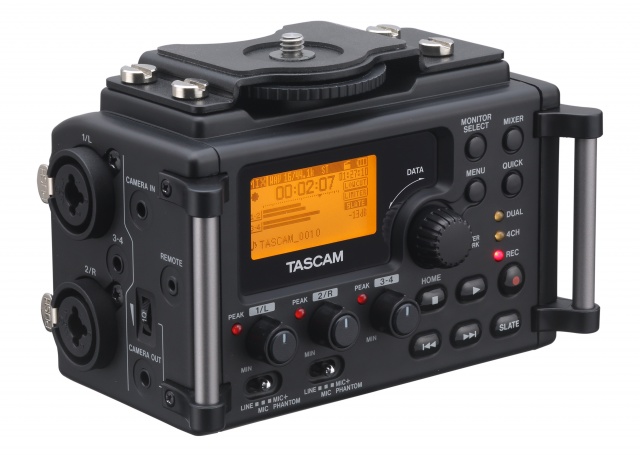 It was only a couple of weeks ago that Tascam announced the DR-60D field recorder that is designed with the enthusiast filmmaker in mind. I thought it was one of the three most interesting products at NAB 2013 but, no sooner than the buzz from NAB had began to die down than Zoom returns fire with the announcement of the Zoom H6 at the Musikmesse fair at Frankfurt.
It was only a couple of weeks ago that Tascam announced the DR-60D field recorder that is designed with the enthusiast filmmaker in mind. I thought it was one of the three most interesting products at NAB 2013 but, no sooner than the buzz from NAB had began to die down than Zoom returns fire with the announcement of the Zoom H6 at the Musikmesse fair at Frankfurt.Details are limited but we can see that Zoom has designed the H6 with video applications in mind. Most excitingly it has four on-board, XLR/TRS inputs, expandable to six with an optional, interchangeable XLR/TRS head and it will record all six channels simultaneously and each channel has a dedicated, hardware, level control knob. That's making the Tasam Dr-60D's mere two XLR inputs seem a little paltry by comparison. And that could be Zoom's intention: you might have been just about to order the DR-60D but Zoom's press release will give you pause - if you can wait a little longer, being able to record 6 channels from XLR at once could be worth your patience.
Why would you need so many channels? Options. With 6 channels being able to lav and boom all the talent on set will give you so many more options back in the edit bay. Hopefully you'll be able to input one mic into two channels set at different levels; one dialed back for safety but both from the same source.
But this is just speculation as Zoom haven't announced a shipping date or price yet. If the H6 is adopted by enthusiast filmmakers with as much enthusiasm as they've taken to the H4 over the past few years then Zoom will have another huge hit on their hands. Of course this depends on them pricing the H6 correctly and getting it out to the market before Tascam do any serious damage to Zoom's fan-base.


